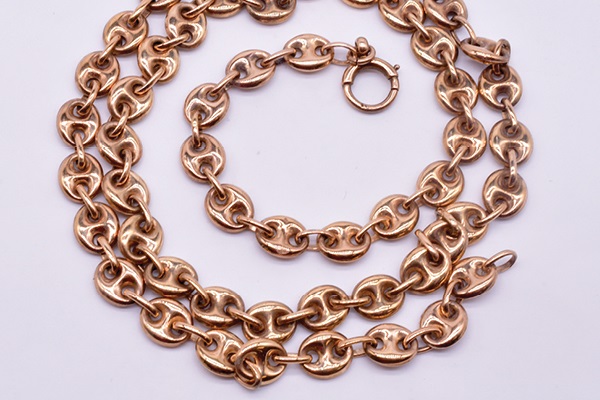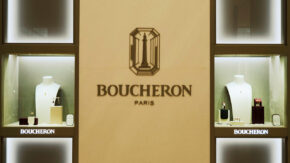When it comes to antique and vintage jewelry, it’s not just styles that are cyclical, but time periods as well. Art Deco might be the hottest category for five years in a row, but then cultural trends, fashion directions, and the newest wave of aficionados will shift the market focus to other eras and looks.
Supply and demand also affect which pieces perform well. If it’s becoming hard to find, say, Georgian or Edwardian/Belle Époque jewelry, and there are more styles available from the Retro to mid-century modern periods, that will impact what sells. When clients start encountering larger and bolder gold pieces they haven’t seen before, those will likely become popular, especially among a new generation of collectors. And although Victorian jewelry from the Romantic era (1837 to 1860) and the Revival styles of the Grand period (1861 to 1885) continue to attract customers and inspire designers, they, too, have had their ups and downs.
Here, dealers who exhibited at the New York Antique Jewelry & Watch Show in October discuss which categories have performed best over the past few years.
Yellow gold
Yellow gold has been trending for some time, and no matter the period, it continues to sell more than any other metal color — “even in engagement rings,” according to Grace Lavarro, owner of Los Angeles-based company Jewels by Grace. Bridal is a huge part of Lavarro’s business, and she has seen a variety of styles and decades appeal to her clients. “But now, young couples getting married for the first time and those that are older and on their second time around want yellow. And most women I have been dealing with lately desire an antique diamond solitaire in a simple four- or six-prong setting in yellow gold. Very different from just five or so years ago, when all I could sell was platinum and Art Deco rings.”
Christine Walsh, vice president of G. Lindberg Jewels, agrees. “We are selling yellow gold from every period — from Victorian engraved bangles and archeological revivalist earrings to ’70s-style long chains.”
Dana Kiyomura, owner of New York-based dealer Keyamour, affirms that yellow gold bangles are selling well, particularly the wide ones with simple patterns.
Mid-century
Given this appetite for yellow gold, it makes sense that jewelry from the mid-20th century has become an overnight sensation.
“Big, chunky, mid-century and ’70s-’80s vintage jewels are in demand like I have never seen them before,” says Lavarro. “Women are no longer afraid to wear big and bold statement jewels in their daily lives.”
Lovers of yellow gold chains enjoy jewels spanning all eras, from Georgian to the 1980s, says Jennifer Shapiro, partner at The Spare Room Antiques in Baltimore, Maryland. Victorian Albert chains are still in demand, but she cites curb links, mariner links, and long rectangular chains from the 1970s and ’80s as prompting the greatest enthusiasm among her clients.
“Mid-century modern tends to be desirable because jewelry styles run parallel to furniture styles,” Shapiro explains. “Since this style of furniture is so popular right now, it stands to reason that the jewelry is as well, as the clean lines…appeal to younger buyers. This demographic wants less ornamentation, less fuss and less worry; modern jewelry…fills that somewhat minimalist desire.”
Walsh agrees that the main customer for this period is definitely younger, someone who might not have seen these styles the first time around in either furniture or jewelry.
The most popular pieces from Retro through mid-century modern are ear clips and earrings, according to Pat Saling, owner of Pat Saling Jewelry Collection in New York. “Although it’s fabulous to own a pair of Art Deco chandeliers, our lifestyles have changed, and with that comes change in the jewelry women can wear every day. These on-the-ear styles can range from smaller to larger, depending on the woman who wears them and her individual tastes, as well as the shape of her face, her complexion and what will work best for her lifestyle.”
Sentimental pieces
Kiyomura has noticed a pull toward sentimental jewelry. “People want to feel connected to their loved ones. They are purchasing jewels that have symbolism and meaning that have kept them going through the pandemic or that resonate with something that has happened, a special occasion, or someone in their lives,” she says. “Often, these pieces are talismans that offer luck, protection, guidance and direction. These types of pieces never go out of style. But there are certain pieces that are particularly relevant right now, like lockets with simple, feminine designs that have significance to the wearer.”
And while connoisseurs take pleasure in owning items from recognizable eras such as early Victorian and Georgian, they also view these jewels as sound investments.
“There is a limited amount left in the world; we can’t create more,” notes Shapiro. “When they are authentic, rare and meaningful, these pieces are highly valued among long-time collectors.”
Chokers
Although Saling sells predominantly longer chains from different periods and in variously colored metals, she believes the choker is making a comeback.
“Every woman had to have a choker about 20 years ago, and like most trends in antique and vintage jewelry, at some point, the tendency to wear these styles so close to the neck ended. But we are seeing a return to everything from buckle styles on grosgrain to the Edwardian seed-pearl styles with diamond dividers, to more casual and later metal- and chain-style ’70s chokers that were popular during the disco era,” she says.
Brooches
Saling also cites brooches as perfect for wearing with everything. “You can wear one large en tremblant brooch from the Victorian era on a lapel, the shoulder of a gown or the side of the waist of a cocktail dress, as just a few examples. But the most fun is mixing smaller brooches from different periods and creating little stories on a lapel, the side of a cashmere sweater, or in the hair with bobby pins holding them in place when they don’t have proper fittings as hair ornaments of their own.”
Walsh features smaller enameled Art Nouveau brooches in the shape of flowers whenever she exhibits at a show. Her most desirable botanicals are pansies with violets, dogwoods, and lilies of the valley, to name a few; they are often American-made and signed. “They tend to be some of our best-selling items at the show, and we often sell them in multiples or at least a few to get our customers started on creating little garden parties to wear grouped together.”
Image: The Spare Room Antiques



